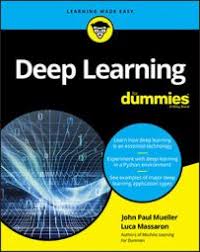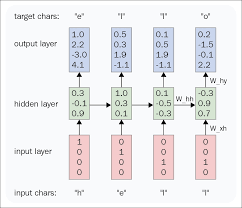Understanding Neural Networks: A Beginner’s Guide
Neural networks are a fundamental concept in the field of artificial intelligence and machine learning. Despite their complex-sounding name, neural networks can be broken down into simpler terms that even beginners can grasp.
What are Neural Networks?
At its core, a neural network is a computer system modeled after the human brain. It consists of interconnected nodes, or “neurons,” that work together to process and analyze data. These neurons are organized into layers, with each layer performing specific tasks in the data analysis process.
How Do Neural Networks Work?
Neural networks learn from examples and adjust their internal parameters to make accurate predictions or classifications. This process is known as training, where the network is fed with input data and corresponding output labels to learn patterns and relationships within the data.
Types of Neural Networks
There are various types of neural networks designed for different tasks, such as:
- Feedforward Neural Networks: The simplest form of neural network where information flows in one direction from input to output.
- Recurrent Neural Networks (RNNs): Capable of processing sequential data by retaining memory of past inputs.
- Convolutional Neural Networks (CNNs): Ideal for image recognition tasks due to their ability to capture spatial hierarchies in data.
Applications of Neural Networks
Neural networks have a wide range of applications across industries, including:
- Natural Language Processing: Used for language translation, sentiment analysis, and chatbots.
- Computer Vision: Powering facial recognition systems, object detection, and autonomous vehicles.
- Finance: Predictive modeling for stock market trends and risk assessment.
The Future of Neural Networks
The field of neural networks is constantly evolving, with researchers exploring new architectures and techniques to improve performance and efficiency. As technology advances, neural networks will continue to play a crucial role in shaping the future of artificial intelligence and machine learning.
In conclusion, while neural networks may seem intimidating at first glance, understanding the basic principles behind them can help beginners appreciate their power and potential in solving complex problems. With further exploration and practice, anyone can delve deeper into the world of neural networks and unleash their capabilities.
7 Essential Tips for Beginners to Master Neural Networks
- Understand the basics of neural networks before diving into complex concepts.
- Start with a simple neural network structure with few layers and neurons.
- Choose the right activation function based on the problem you are solving.
- Ensure your data is properly preprocessed and normalized for better training results.
- Experiment with different hyperparameters like learning rate and batch size to optimize performance.
- Regularly validate your model using a separate test dataset to avoid overfitting.
- Stay updated with the latest trends and advancements in neural network technology.
Understand the basics of neural networks before diving into complex concepts.
To effectively navigate the world of neural networks, it is essential to grasp the foundational principles before delving into more intricate concepts. By understanding the basics of how neural networks operate and learning about their fundamental components, beginners can build a solid knowledge base that will pave the way for exploring more advanced topics with confidence. Just like constructing a sturdy building requires a strong foundation, comprehending the basics of neural networks is key to unlocking their potential and harnessing their capabilities in solving complex problems.
Start with a simple neural network structure with few layers and neurons.
When delving into the world of neural networks as a beginner, it is advisable to start with a simple structure comprising only a few layers and neurons. By beginning with a basic neural network architecture, you can grasp the foundational concepts and mechanisms without feeling overwhelmed by complexity. This approach allows for a gradual understanding of how data flows through the network and how adjustments to parameters impact its performance. Starting simple provides a solid foundation for building more complex neural networks as you progress in your learning journey.
Choose the right activation function based on the problem you are solving.
When delving into the realm of neural networks, a crucial tip for beginners is to carefully select the appropriate activation function based on the specific problem at hand. The activation function serves as a key element in determining how a neural network processes and outputs data. By understanding the nature of the problem being solved, whether it involves classification, regression, or other tasks, choosing the right activation function can greatly impact the network’s performance and efficiency. It is essential to explore different activation functions and their characteristics to make informed decisions that align with the objectives of the problem being tackled.
Ensure your data is properly preprocessed and normalized for better training results.
To maximize the effectiveness of your neural network training, it is crucial to ensure that your data is properly preprocessed and normalized. By preprocessing and normalizing your data, you can enhance the network’s ability to learn patterns and relationships within the data more efficiently. This step helps in improving the convergence speed of the training process and can lead to better overall performance and accuracy of the neural network model. Proper data preprocessing and normalization are key factors in setting a strong foundation for successful neural network training outcomes.
Experiment with different hyperparameters like learning rate and batch size to optimize performance.
To enhance the performance of neural networks, especially for beginners, it is recommended to experiment with various hyperparameters such as learning rate and batch size. By adjusting these parameters, users can optimize the network’s efficiency and accuracy in processing data. Finding the right combination of hyperparameters through experimentation allows for better training results and improved overall performance of the neural network model.
Regularly validate your model using a separate test dataset to avoid overfitting.
To ensure the effectiveness and reliability of your neural network model, it is crucial to regularly validate its performance using a separate test dataset. By doing so, you can prevent overfitting, a common issue where the model performs well on training data but fails to generalize to new, unseen data. Validating your model with a test dataset helps assess its ability to make accurate predictions on unfamiliar data, ultimately enhancing the robustness and generalization capability of your neural network.
Stay updated with the latest trends and advancements in neural network technology.
To truly grasp the concept of neural networks as a beginner, it is essential to stay updated with the latest trends and advancements in neural network technology. By keeping abreast of new developments in the field, beginners can gain valuable insights into how neural networks are evolving and being applied in various industries. This continuous learning process not only enhances understanding but also opens up opportunities to explore innovative techniques and applications that can further expand one’s knowledge and skill set in working with neural networks.



